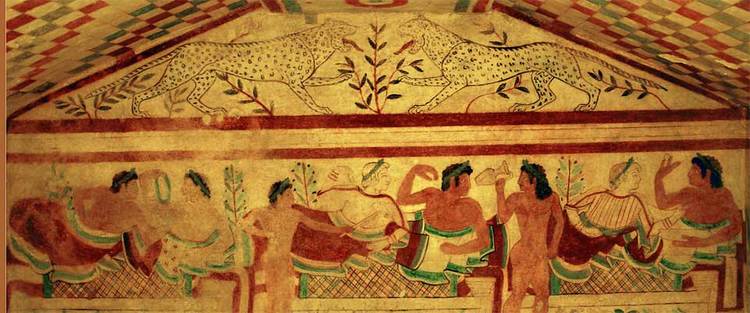The Tuscia is a historical region located between Tuscany, Umbria, Lazio and the Tyrrhenian Sea. Since prehistoric times, this beautiful land has welcomed many different people that have left obvious signs of their presence.

In particular, the Etruscan civilization has marked the area with an indelible imprint that can still be admired today, thanks to the discovery of the Necropolis with sculptures, frescoes, jewels and objects used in the daily life.
The Tuscia’s proximity to Rome and the fact that it also belonged to the Papal State, led to the construction of castles, fortresses and villages, as well as palaces, gardens and villas of high architectural and artistic importance.
Apart from its historic heritage, the Tuscia is fascinating thanks to its landscape, which is able to surprise the traveler each and every time with its colors and new forms. It is a land of volcanic origin with a peculiar and unique soil that is able to produce great wines, such as Aleatico di Gradoli, Cerveteri, Colli Etruschi Viterbesi and Est! Est!! Est!!!.
We have chosen three itineraries to help you discover the Tuscia:
Famous families of the Tuscia
The ruling families who had a major impact on the Tuscia were the Farnese, the Orsini, the Monaldeschi and the Baglioni, thanks to the artistic and development works that they carried out in the different areas. Cities where you can admire these families’ patronage of art and discover their history are: Caprarola, Bomarzo, Mugnano, Bolsena, Grotte di Castro, Capodimonte, Farnese and Castro. The town of Montefiascone, instead, experienced its greatest splendor in the 13th century when it was annexed by the papacy to the Patrimony of St. Peter in Tuscia.
The Calanchi Valley
In this wide and bright valley, the Tiber River flows downstream from the deep and beautiful Forello Gorge canyon and through Corbara Lake. Throughout the valley you can find outcrops of sedimentary clays of the Pleistocene era! ‘Calanchi’ actually means gullies, or lands created by running water, eroding sharply into soil. In fact, the valley is crossed and shaped by the Lubriano and Torbino creeks, tributaries of the Tiber River. One of the absolute protagonists in the Calanchi Valley is Civita di Bagnoregio, which was described by the poet Bonaventura Tecchi as the “dying village” for its striking position on the top of a cliff of friable volcanic tuff. From here, you can admire a lunar view of the valley.
The Brigands Path
This beautiful path starts and ends in nature. It begins in the Monte Rufeno Reserve, then stretches into the WWF protected area of Vulci, passing by the shores of Lake Bolsena, through the Lamone Forest and crossing the fertile lands of the Maremma. Between the XIX and XX century, this area witnessed the rise and fall of brigandage, which was strictly connected to the local conditions of poverty. The brigands threatened, kidnapped, raped and wounded people only to live as best as they could, protecting their own interests and those of their proteges. They were a mafia-like criminal association who also worked for important landowners and against the State and the Church. To have a feel of their ‘criminal art’, do not miss visiting cities like Monte Rufeno, Proceno, Acquapendente, Grotte di Castro, Latera and Canino.
Photo credits
Fresco in necropolis – by Waugsberg
Civita di Bagnoregio – from turismoefinanza.it
Farnese Palace garden – from encgo.wordpress.com
Calanchi Valley – from juzaphoto.com
Brigand Path – from percorsietruschi.it